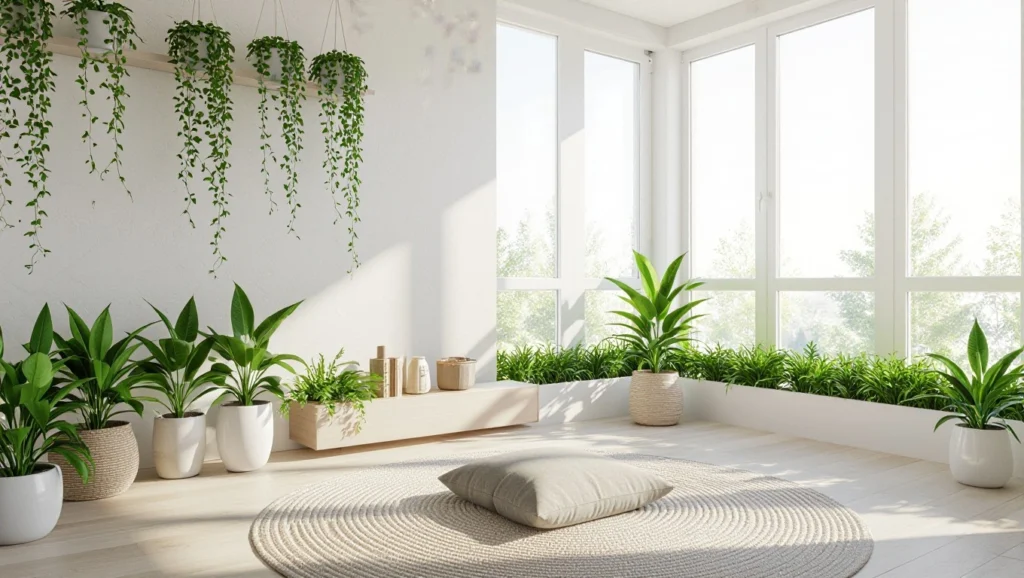There’s something profound that happens when you realize that choosing to be alone isn’t the same as being lonely. Maybe it’s the moment you come home to your perfectly curated space and feel genuine excitement about your evening plans—plans that involve just you. Or perhaps it’s when you recognize that your ability to make decisions without consultation isn’t a limitation, but a sophisticated lifestyle advantage that most people can only dream about.
The truth is, when you’re building an intentional solo lifestyle, understanding the psychology of positive solitude becomes your secret weapon for mental wellness, creativity, and personal fulfillment. This isn’t about accepting isolation or “making the best” of single living—it’s about recognizing that intentional solitude represents one of the most psychologically beneficial states available to modern professionals.
For solo dwellers, the distinction between solitude and loneliness isn’t just academic—it’s the foundation that transforms independent living from a circumstantial arrangement to a deliberate lifestyle optimization. With this psychological framework in place, you’re ready to move from defensive solo living to offensive solitude mastery—the kind that turns good independent living into exceptional personal development.
Table of Contents

Why Solo Dwellers Have Hidden Psychological Advantages
Here’s what traditional psychology misses: solo living actually provides unique mental health advantages that couples and families struggle to replicate. While others must navigate relationship dynamics, coordinate emotional needs, or manage household tensions, you can engage in pure psychological self-optimization with unprecedented focus and consistency.
The Solo Psychological Edge:
- Uninterrupted Introspection: Deep self-awareness development without external emotional interference
- Authentic Decision-Making: Choices aligned with personal values rather than relationship compromises
- Flexible Emotional Processing: Managing feelings and stress responses on your optimal timeline
- Creative Mental Space: Enhanced cognitive resources freed from relationship maintenance demands
- Intentional Environment Control: Physical spaces designed specifically for psychological well-being
Recent research demonstrates that people who enjoy spending time alone report higher life satisfaction, lower stress, and enhanced creativity when solitude is chosen rather than imposed.
Pro Tip: Keep a “Solo Wins” list—each evening, jot down three ways your alone time made you feel more creative, relaxed, or confident.
The Foundation: Understanding Solitude vs. Loneliness Psychology
The Neurological Reality of Positive Solitude
The distinction between solitude and loneliness operates at both cognitive and neurological levels. Loneliness is an emotional discomfort from unmet social needs, whereas solitude is an active, chosen state of being alone without distress.
Neuroscientific studies reveal that reduced social stimulation prompts the brain to activate creative networks, enhancing cognitive function. This neuroplasticity shows how intentional solitude actually amplifies mental capacity rather than diminishing it. The key lies in self-determined motivation for solitude versus experiencing other-imposed isolation.
The Reframing Revolution
The most transformative insight: cognitive reappraisal changes solitude experiences. Studies show that reading about solitude’s benefits significantly boosts positive emotions during alone time compared to control groups.
Successful Cognitive Reframing Strategies:
- Challenge negative thoughts about social judgment and self-worth
- Reframe beliefs about needing constant companionship for happiness
- Associate solitary activities with growth, creativity, or relaxation
- Build confidence in your ability to be comfortable alone
Pro Tip: Create a “Solitude Affirmation” card—“I am energized and inspired by my own company”—and review it before your next solo session.

The Solo Dweller’s Psychological Superpower Framework
Phase 1: Mindset Mastery
- Autonomous Identity Development: Solo living fosters identity formation free from external expectations, enabling authentic decision-making.
- Enhanced Self-Awareness: Solitude provides uninterrupted time for introspection, improving emotional intelligence.
- Stress Reduction Through Space Control: Alone time offers reprieve from social pressures, aiding emotional regulation.
Phase 2: Environmental Psychology Optimization
Sanctuary Creation Strategy: Intentional space design is crucial for psychological success. The physical environment shapes mental states, so curate areas that support your well-being.
Key Environmental Elements:
- Dedicated Mindfulness Nook: A corner with cushions, plants, and soft lighting for meditation or reading
- Personal Artifact Displays: Photographs, art, or keepsakes that reinforce your values
- Lighting Optimization: Adjustable lamps for both focus and relaxation modes
- Comfort Zones: A chaise lounge or floor cushion area for emotional regulation and stress relief
Pro Tip: Rotate one decorative element—new plant, artwork, or pillow—every month to keep your space feeling fresh and stimulating.

Advanced Strategies: The Paradox of Positive Solitude
Understanding “Aloneliness”
Just as loneliness arises from insufficient social connection, “aloneliness” emerges when individuals lack adequate solitary time. Studies show that 11% daily solitude reduces negative feelings in subsequent social interactions by enhancing autonomy satisfaction and emotional balance.
Building the Capacity to Be Alone
Emotional Independence Development: Greater comfort alone leads to resilience and reduces dependence on others for emotional fulfillment.
Graduated Exposure Method:
- Weeks 1–2: Enjoy comfortable solo activities (reading, cooking)
- Weeks 3–4: Extend alone time and try new solitary pursuits
- Weeks 5–6: Attend events solo (movies, cafés)
- Weeks 7–8: Plan a solo adventure (day trip, workshop)

Overcoming the Transition: From Circumstantial to Intentional
Addressing the Adjustment Period
Feelings of uncertainty during solo living transitions are normal—these are adjustments to increased autonomy, not signs of failure. Proactive mental health approaches ensure minor discomforts don’t escalate.
The Confidence Building Timeline:
- Month 1: Establish your solo sanctuary and basic routines
- Month 2: Deepen mindfulness practices and expand comfort zones
- Month 3: Integrate balanced social connections and celebrate growth
Managing Occasional Loneliness
Even intentional solitude can bring temporary loneliness. Healthy solo dwellers combine self-compassion techniques with strategic social outreach to navigate these moments.
Reframing Protocol:
- Acknowledge the feeling without judgment
- Recall the benefits you’ve experienced in solitude
- Engage in a positive solitary activity
- Connect with someone if desired, from choice not desperation
Your Next 30 Days: The Solitude Mastery Action Plan
Week 1: Assessment & Foundation
- Document current feelings about alone time
- Create a dedicated solitude corner
- Practice 15 minutes daily of device-free alone time
Week 2: Mindset Development
- Read about solitude benefits
- Challenge negative thoughts with evidence
- Start a gratitude log focused on independence
Week 3: Experience Expansion
- Try one new solitary activity
- Practice mindful eating at three meals
- Plan a solo outing—park, gallery, or café
Week 4: Integration & Celebration
- Reflect on psychological shifts and achievements
- Share positive solitude experiences with friends
- Set goals for continued solitude mastery
The Long-Term Vision: Your Psychological Transformation
Solo dwellers who master intentional solitude develop enhanced creativity, emotional resilience, and life satisfaction. Independence isn’t about forgoing relationships; it’s about optimizing both solitude and social time for maximum benefit.
Your psychological superpower: When you genuinely enjoy your own company, you bring your best self to every interaction, make authentic choices, and build a life that truly reflects your vision of fulfillment.
Use of this website constitutes acceptance of all our disclaimers and legal agreements.

